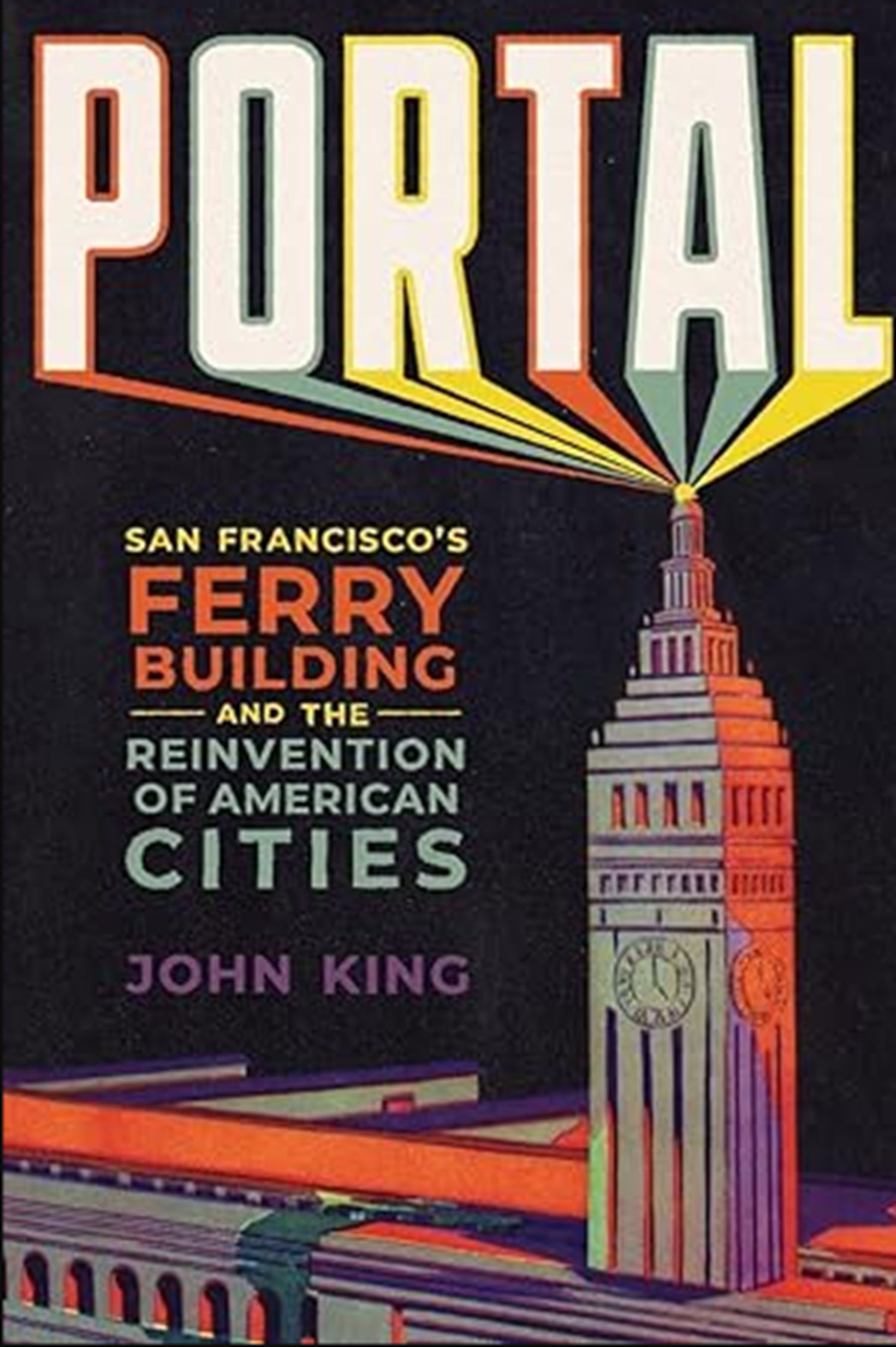By Ray Bert
Portal: San Francisco’s Ferry Building and the Reinvention of American Cities, by John King. New York City: W.W. Norton & Co., 2023; 320 pages, $29.99.
In Time and Again, a beloved light science fiction novel by Jack Finney, time travel is accomplished through a form of self-hypnosis aided by surrounding oneself fully in the trappings of the time one is trying to reach. Main character Si Morley moves backward from 1970 to 1882 with significant assistance from the Dakota apartment building in New York City. By living in that nearly century-old apartment building, dressed in and surrounded by the accoutrements of the late 19th century – including a Central Park view out of his window that was unchanged since 1882 – Morley successfully makes the leap and sets about solving an old mystery.
Had Finney chosen instead to set his novel in 19th-century San Francisco, that city’s historic and enduring Ferry Building might well have been Morley’s portal of choice. Though it missed out on that supporting role in a work of fiction, the iconic structure gets the starring role in a deeply researched new work of nonfiction, Portal: San Francisco’s Ferry Building and the Reinvention of American Cities.
Completed in 1898, the Ferry Building – a Beaux-Arts style design with a 245-foot clock tower – celebrated its 125th anniversary last year. In that century-plus time frame, the building has journeyed from its position as a beacon of progress to an icon and landmark to disuse followed by a desultory repurposing before finally – through a major restoration – returning to icon status as a symbol of urban renewal that embraces the past and enhances the present.
Author John King is a two-time finalist for the Pulitzer Prize and has served as the architecture critic for the San Francisco Chronicle for more than 20 years. His work in that capacity helped him produce two previous books centering on San Francisco architecture: Cityscapes and Cityscapes 2, each of which profiled 50 different buildings.
With Portal, King continues his focus on San Francisco but also manages to put the city, and this building, in the larger context of similar rise/fall/renewal cycles in other American cities such as Boston and New York. The book’s first three sections – “Heyday,” “Relic,” and “Rebirth” – cover the major periods of the Ferry Building’s history.
Born and coming of age as a transportation hub (for a time the world’s second busiest) for ferries and rail, the building’s middle age was ushered in by the acceleration of car culture and the construction of freeways to accommodate it. None of these were more notorious locally than the elevated, double-decked Embarcadero Freeway that began opening in the late 1950s and in places literally overshadowed the Ferry Building. Only after the freeway was damaged in the 1989 Loma Prieta earthquake and demolished a few years later was the stage set for the Ferry Building to rise back to prominence, this time as a mixed-use location combining transit, office space, and retail.

King recounts, in rich journalistic detail, the numerous twists and turns of this story: politics versus economics, historic versus “progress,” beauty versus commerce, and all the many other angles. Those who find compelling the history of these struggles and how different ideas and ideals have dominated during different eras in the U.S. will find much to interest them – and in many cases, likely much that they recognize if they hail from a city.
The book’s concluding section, “The Unknown,” includes significant discussion of a planning challenge for San Francisco and other coastal cities: sea-level rise in the coming decades. The author notes that the new plaza accompanying the Ferry Building was elevated and “calibrated to meet the high end of anticipated water levels through at least 2070.” And that’s just to meet the potential for normal daily water levels. Significant rise combined with a storm similar to the “bomb cyclone” that hit the Bay Area in October 2021 could still flood and paralyze much of the Embarcadero area where the building sits.
This article is published by Civil Engineering Online.



